Peanut Butter Ramen
Forget everything you thought you knew about ramen. This isn’t your college dorm room packet of noodles – this is a flavor explosion that combines the nutty richness of peanut butter with the umami depth of miso and the spicy kick of gochujang. One spoonful and you’ll wonder how you ever lived without this in your life.
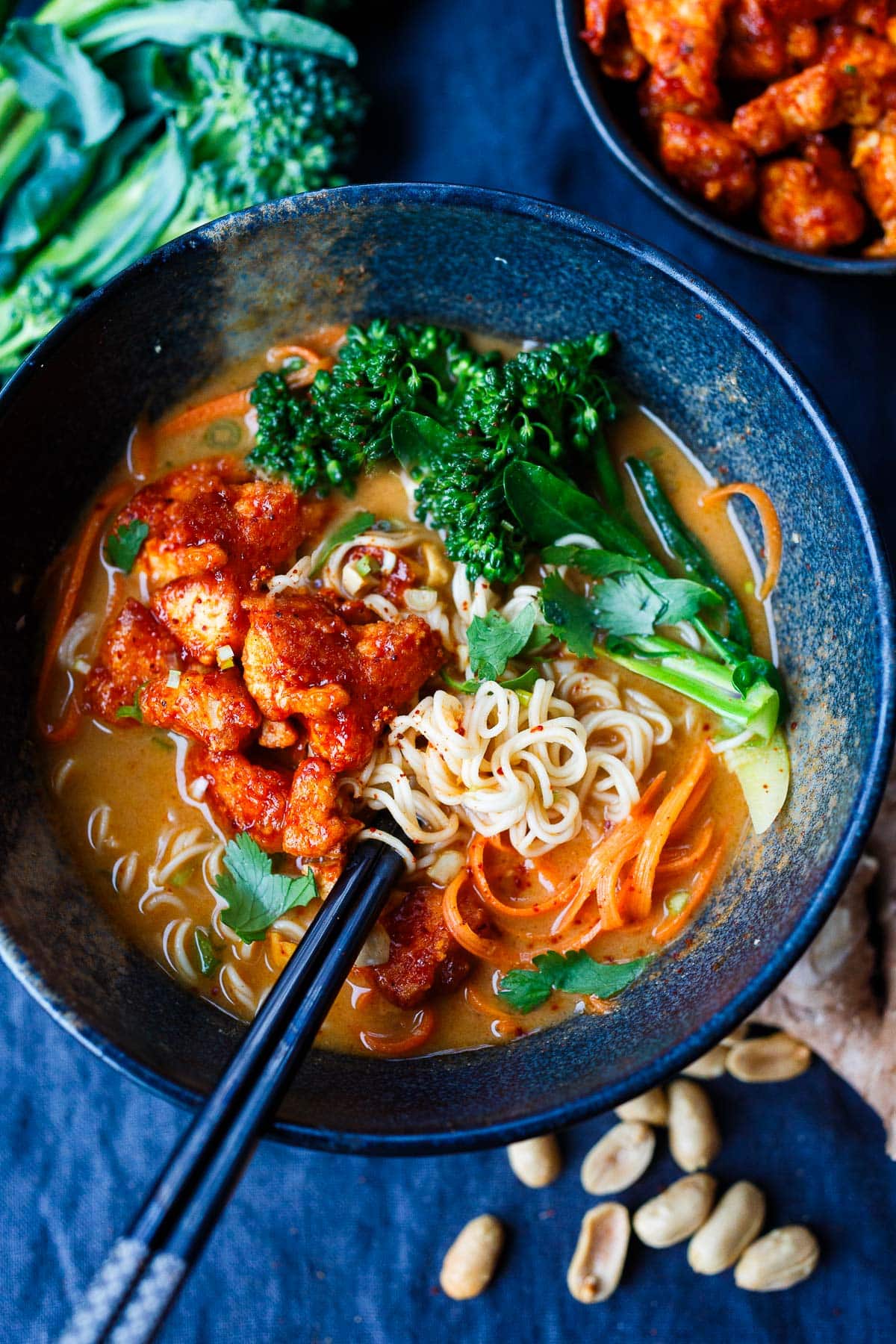
The magic of this dish lies in its perfect balance of textures – springy noodles swimming in a velvety broth, topped with crispy-edged tofu that soaks up all that savory-sweet sauce. It’s customizable, deeply satisfying, and surprisingly simple to make. Plus, it’s completely vegan (unless you add that optional soft-boiled egg, which, honestly, is pretty fantastic).
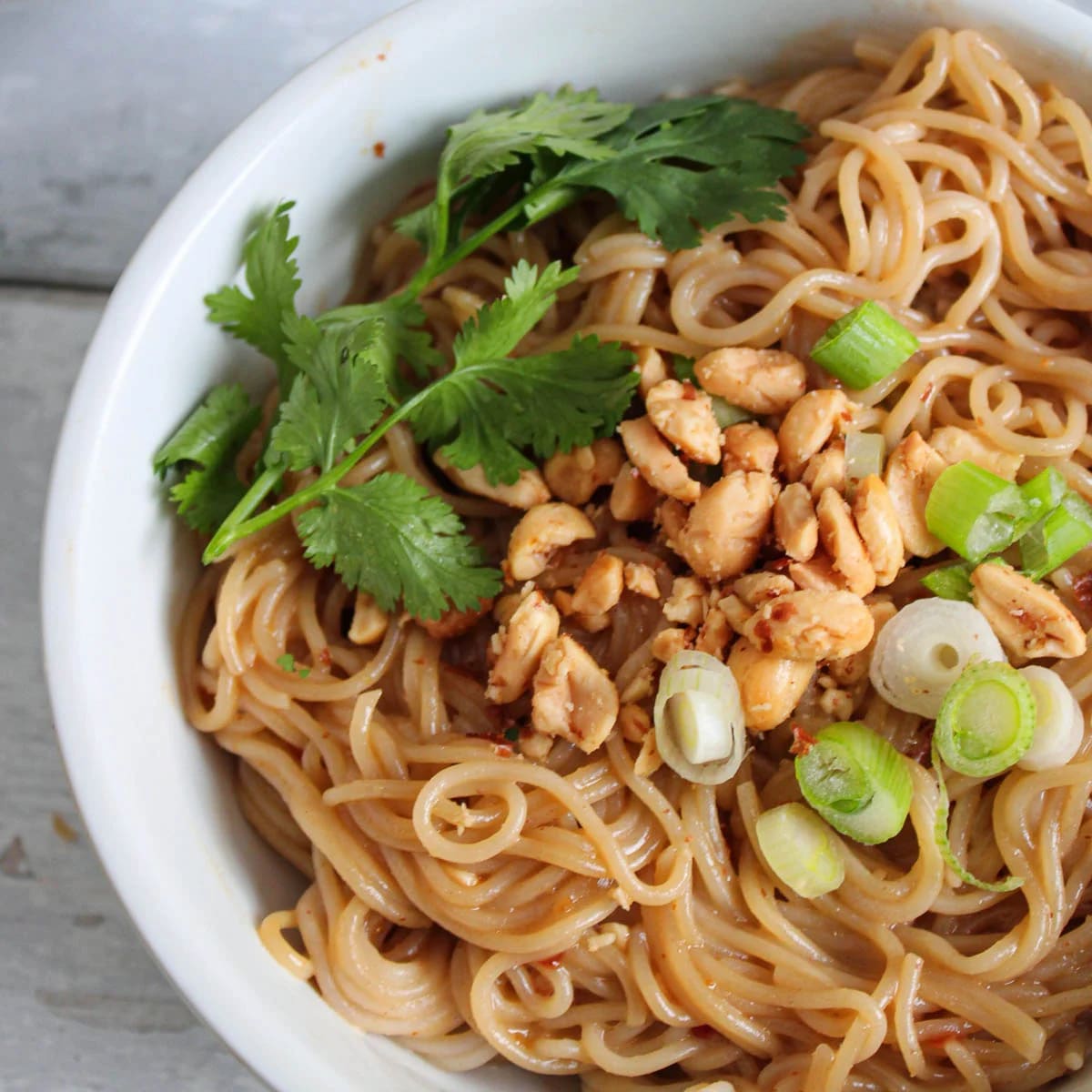
Ingredients
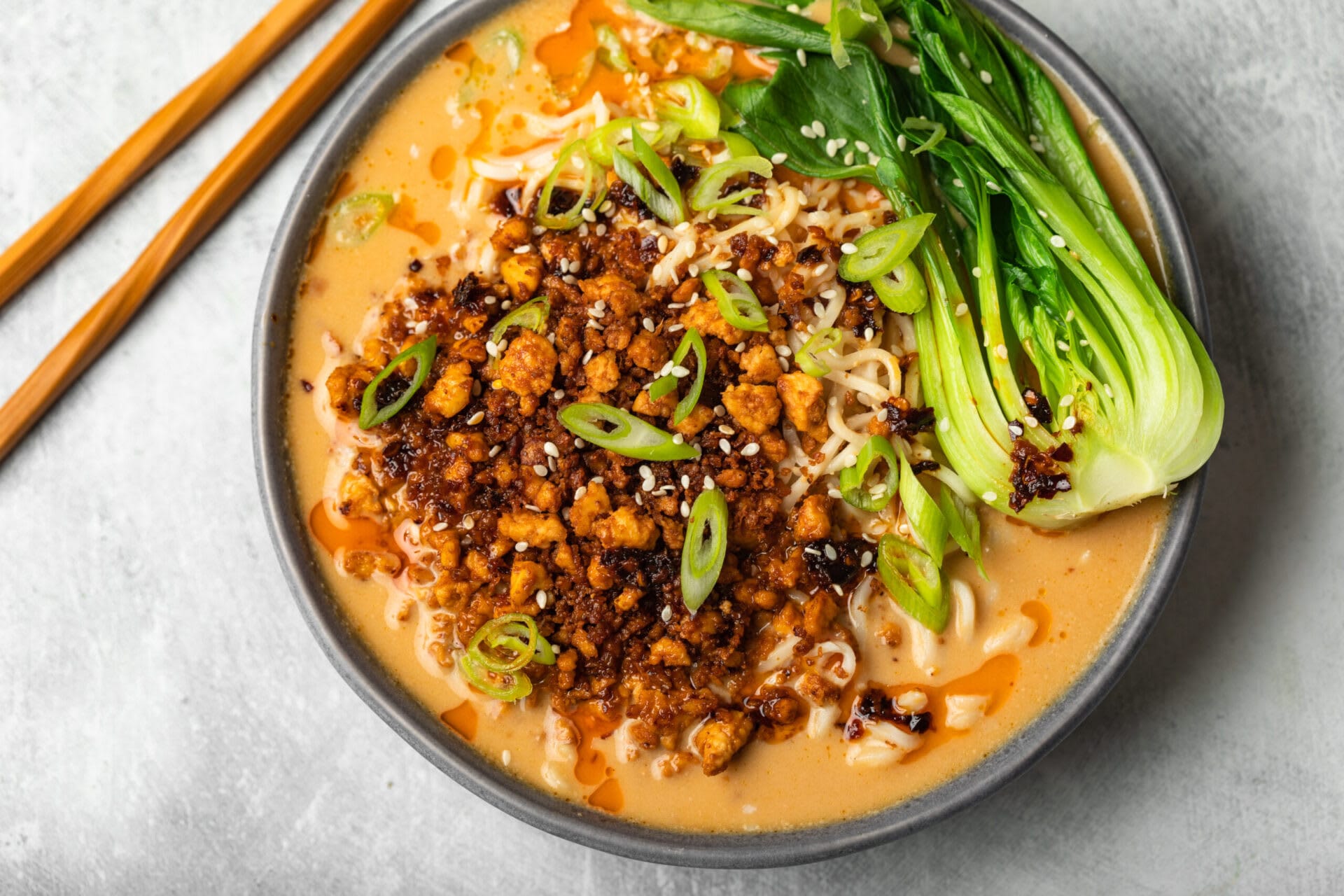
For the Crispy Korean Tofu:
- 8 ounces firm tofu
- 3 tablespoons cornstarch
- Salt and black pepper
- 1-2 tablespoons gochujang paste
- 1 tablespoon soy sauce
- 1 tablespoon maple syrup
For the Peanut Butter Ramen Broth:
- 3 cloves garlic
- 1 tablespoon fresh ginger, minced
- 1-3 tablespoons gochujang paste
- 1/4 cup natural unsweetened peanut butter
- 2 tablespoons white miso paste
- 4 cups vegetable broth
- 2 teaspoons toasted sesame oil
- 1 tablespoon rice vinegar
- 2 teaspoons maple syrup
- 1-2 tablespoons soy sauce or gluten-free tamari
- 8 ounces noodles (ramen, rice, or soba)
Optional Veggies:
- Shredded carrots, steamed broccoli, kimchi, bok choy, fresh spinach, shredded cabbage, roasted sweet potato, sautéed mushrooms, soft-boiled eggs, daikon radish, pickled radish
Optional Garnishes:
- Scallions, cilantro, crushed roasted peanuts, toasted sesame seeds, sriracha
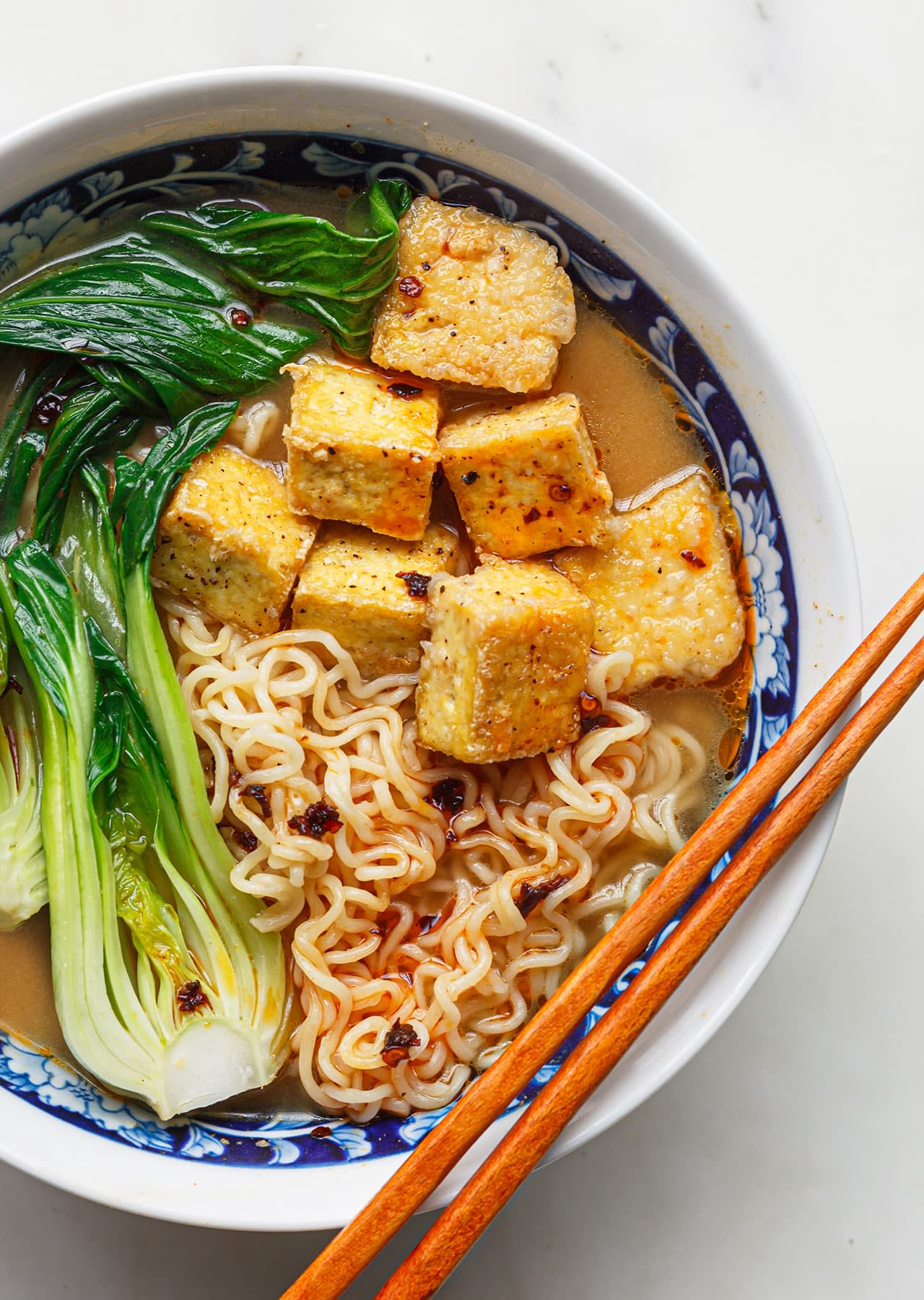
Steps
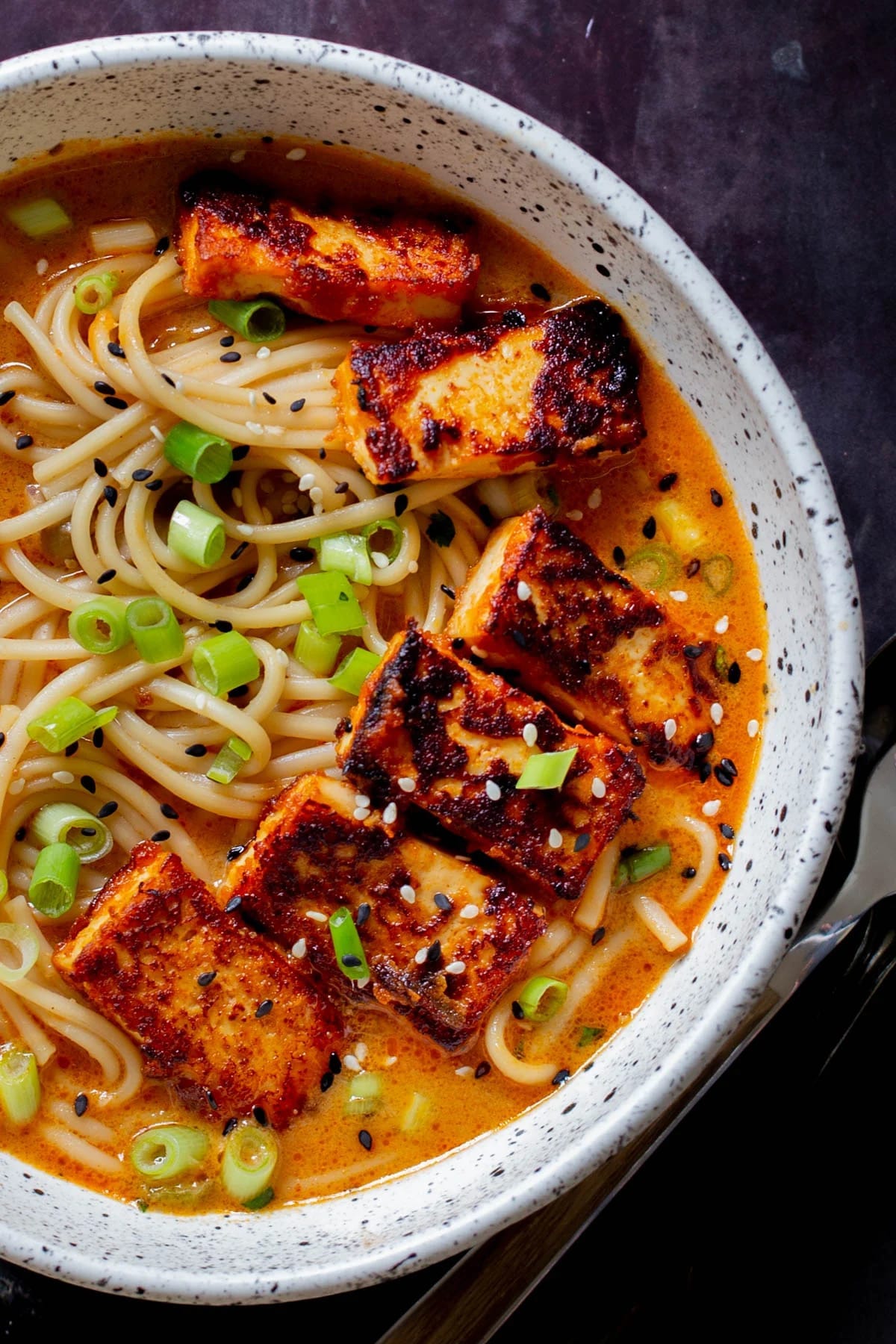
- Make the Crispy Korean Tofu: Using your hands, break tofu apart into roughly one-inch pieces. The ragged edges create more surface area that will crisp up beautifully and absorb more sauce. Place a clean dish towel or paper towel on a plate and spread tofu out in one layer. Let sit for 5-10 minutes to absorb excess moisture.
- In a small bowl, mix together 1-2 tablespoons gochujang paste (start with less if you’re sensitive to heat), 1 tablespoon soy sauce, and 1 tablespoon maple syrup until smooth. Set aside.
- Remove the towel from the tofu and season with a pinch of salt and pepper. Sprinkle with 3 tablespoons cornstarch and toss gently to coat evenly. Make sure each piece has a thin layer of cornstarch – this is what creates that crispy exterior.
- Heat up a skillet to medium-high heat, then add 1-2 tablespoons oil to coat the pan. Arrange the tofu in one layer and don’t touch it for about 5 minutes. This patience is crucial – moving it too early will prevent the crust from forming. When it naturally releases from the pan and has a golden crust, flip the pieces and cook another 4-5 minutes. Then stir the pieces around to crisp up the remaining sides for 2-3 minutes.
- Pour the gochujang sauce mixture over the tofu and toss to coat evenly. You can do this in the pan (easier cleanup) or in a separate bowl (more control). The sauce will caramelize slightly on the hot tofu. Turn off the heat and set aside.
- Make the Broth: In a medium pot over medium heat, add 1 tablespoon oil. Sauté 3 cloves minced garlic and 1 tablespoon minced ginger for 60 seconds until fragrant but not browned. Watch carefully as garlic burns quickly.
- Stir in 1-3 tablespoons gochujang paste (adjust to your spice preference), 1/4 cup peanut butter, and 2 tablespoons white miso paste. Mix until combined – it will look thick and paste-like at this stage, which is normal.
- Gradually add 4 cups vegetable broth while whisking constantly to prevent lumps. Add 2 teaspoons sesame oil and 1-2 tablespoons soy sauce. Whisk until smooth and bring to a simmer over medium heat.
- Once simmering, add 1 tablespoon rice vinegar and 2 teaspoons maple syrup. Reduce heat to low and let flavors meld for 5-7 minutes. Taste and adjust seasonings – add more gochujang for heat, vinegar for tang, or soy sauce for saltiness.
- Meanwhile, in a separate pot, bring water to a boil and cook 8 ounces of noodles according to package directions. Cooking them separately prevents them from absorbing too much broth and becoming mushy. Drain well.
- Assemble Ramen Bowls: Divide cooked noodles among bowls. Ladle the hot peanut butter broth over the noodles (about 1 cup per serving). Top with crispy Korean tofu and your choice of vegetables.
- Garnish generously with sliced green onions, crushed peanuts, or sesame seeds. For extra heat, add a sprinkle of gochugaru (Korean chili flakes) or a drizzle of sriracha. Serve immediately while hot.
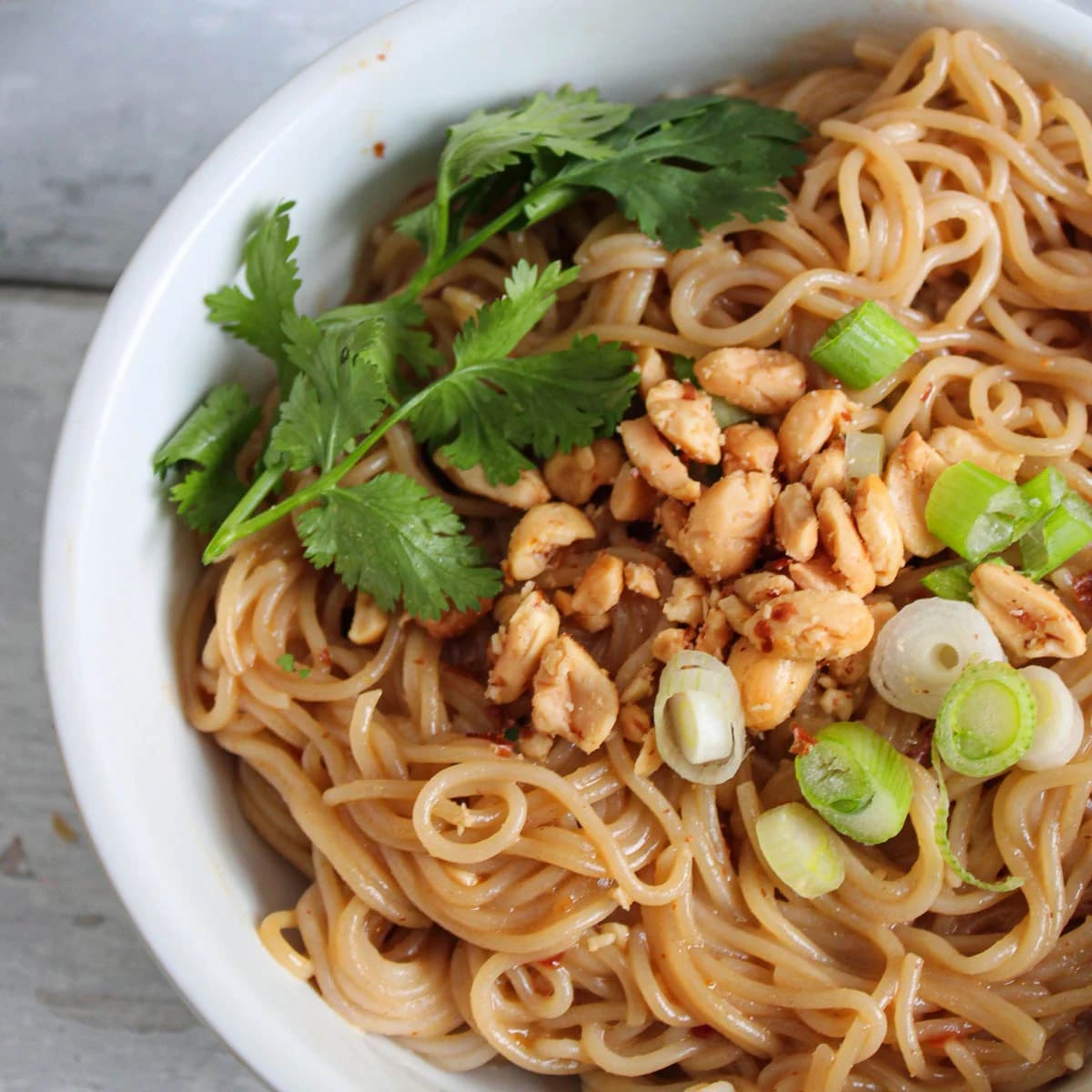
Smart Swaps
- Almond butter instead of peanut butter (1:1 ratio) – creates a milder, slightly sweeter flavor
- Tamari instead of soy sauce (1:1 ratio) – makes the dish gluten-free
- Rice noodles instead of ramen noodles – another gluten-free option with a lighter texture
- Sriracha or sambal oelek (2 teaspoons) + 1 teaspoon brown sugar if you don’t have gochujang
Make It Diabetes-Friendly
- Use shirataki noodles or zucchini noodles instead of regular ramen (reduces carbs by approximately 30g per serving)
- Reduce maple syrup to 1 teaspoon in both sauce and broth (cuts 6g of sugar)
- Add extra vegetables like bok choy and mushrooms to increase fiber content
- Include a protein source like edamame (1/2 cup adds 8g protein) to help stabilize blood sugar
Pro Tips
- Press your tofu for 30 minutes before cooking for maximum crispiness
- Make the broth a day ahead – the flavors deepen overnight in the refrigerator
- Keep noodles and broth separate until serving to prevent noodles from getting soggy
- Add a splash of lime juice just before serving for brightness that cuts through the richness